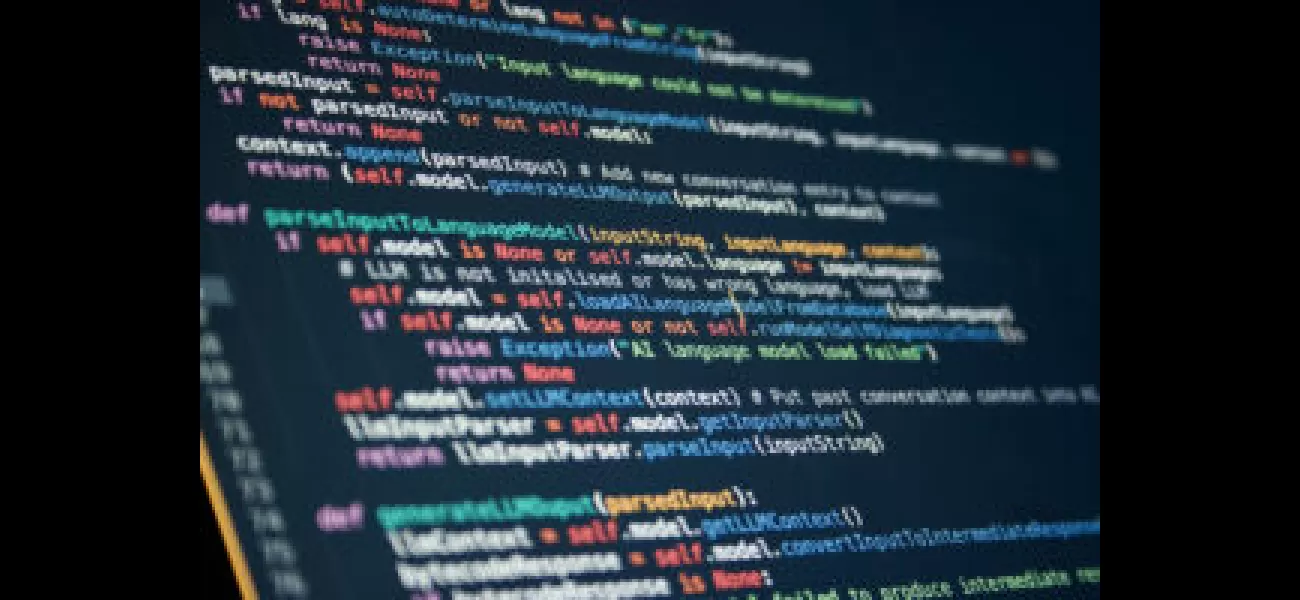This section provides a brief overview of accounting principles and practices for software development.
A quick overview of how to handle the complexity of Section 174 software development accounting, including a clarification on cost capitalization.
June 3rd 2024.

Alright, so we're going to dive into the complicated world of Section 174 software development accounting. It's a bit of a mess, isn't it? I completely understand. We received quite a few inquiries from clients during last tax season about how to handle this complex issue. So, I thought it would be helpful to provide a quick overview of the matter.
Before we get into the details, I want to clarify one thing. Our discussion will be based on the new § 174 statute that was introduced in late 2017, as well as IRS Notice 2023-63, which was published in September 2023. However, in order to properly plan and manage your finances, we all need updated Treasury Regulations. So, keep that in mind as we go through this.
Now, let's get into the nitty-gritty. Section 174 underwent some changes in the 2017 Tax Cuts and Jobs Act, as mentioned earlier. Under the previous law, businesses could simply deduct their software development expenditures as they were incurred. But the new law requires these expenses to be capitalized as "specified research or experimental" costs and then amortized over a period of time.
Just to clarify, this "new" law specifically refers to expenses related to the development of software, which will now be treated as a SRE expenditure according to Section 174. As stated in the statute, "For purposes of this section, any amount paid or incurred in connection with the development of any software shall be treated as a research or experimental expenditure." This is a significant change, as it means that almost all software development costs will now need to be capitalized and amortized.
To put that into perspective, let's say you spend $1,000,000 on developing a piece of software. Under the old law, you could deduct the entire amount in the year it was spent. But now, you would only be able to deduct $200,000 a year over the course of five years, or $66,666 a year over fifteen years.
Now, let's take a look at an example of how this would work in practice. In Notice 2023-63, there is a helpful illustration of how a taxpayer would handle the accounting for Section 174 software development costs. It's important for tax advisors and company accountants to carefully review this example, or its updated version in the regulations.
Essentially, you or your accountants would tally up all the direct and indirect costs related to your software development activities and remove that amount from your profit and loss statement. These costs would then be temporarily held on your balance sheet and amortized over a period of five or fifteen years, depending on whether the research was conducted in the US or outside of it.
There are a couple of things to note about how Section 174 affects accounting. First, the amortization period begins in the year that the costs are paid or incurred, rather than when the software is completed and put into use. So, if a two-year software development project costs $1,000,000 each year, you would amortize each year's $1,000,000 separately, starting in the middle of each year.
Secondly, if you were to sell, retire, or abandon the software before the full five-year period is up (let's say in year 3), you would still continue to amortize the costs. In other words, you cannot write off the remaining unamortized amount.
It's worth mentioning that not all research and experimentation costs need to be capitalized. After some investigation, I was able to get ChatGPT 4o to create a table summarizing the general SRE costs that Notice 2023-63 says should and shouldn't be capitalized. Here's a rough version of that table:
Category
Deductible as Section 162 Expenses
Capitalized and Amortized as SRE Expenditures
Labor Costs
N/A except for a reasonable allocation of other costs for directly supporting SRE activities
Labor costs of employees and contractors performing, supervising, or supporting SRE activities
Materials and Supplies
N/A
Costs of materials and supplies used in SRE activities
Depreciation
N/A
Depreciation on property used in SRE activities
Patent Costs
N/A
Costs of obtaining a patent
I hope this has helped you better understand the complexities of Section 174 software development accounting. It's a lot to wrap your head around, but with the right information and guidance, you can ensure that your bookkeeping is accurate and compliant with the law.
Okay, so, let's talk about Section 174 software development accounting. It can be a bit of a mess, right? I completely understand. Last tax season, we received numerous questions from clients about how to handle the complexity of this topic. That's why I thought it would be helpful to provide a quick overview. However, before we dive into the details, I want to make one clarification. This discussion of Section 174 and software development cost capitalization is based on the new § 174 statute that was introduced in late 2017, as well as the IRS Notice 2023-63 that was published in September 2023. However, in order to properly plan ahead and ensure accurate bookkeeping for 2024, taxpayers and tax accountants will need updated Treasury Regulations.
Now, with that being said, let's get into the nitty-gritty details of Section 174. This section underwent significant changes in the 2017 Tax Cuts and Jobs Act. Under the old law, businesses were able to deduct software development expenditures immediately. However, the "new" law requires these expenses to be capitalized as "specified research or experimental" (SRE) expenditures, which are then amortized over time. The amortization period differs depending on whether the research was conducted in the US (5 years) or outside of the US (15 years).
But that's not the only change. Tax law now considers software development costs to be SRE expenditures. As stated in the statute, Section 174, "any amount paid or incurred in connection with the development of any software shall be treated as a research or experimental expenditure." This means that almost every cost associated with software development must be capitalized and amortized. To put this into perspective, if a business spends $1,000,000 on developing software, they cannot deduct the full amount in one year. Instead, they can deduct $200,000 per year for 5 years, or $66,666 per year for 15 years.
To further illustrate this concept, let's look at an example of Section 174 software development accounting. IRS Notice 2023-63 provides a helpful example of how a taxpayer should handle the accounting for these expenses. It's important for tax advisors and company accountants to carefully review this example, or its updated replacement in the regulations. Essentially, the business must add up all the direct and indirect costs associated with their software development activities, remove that cost from their profit and loss statement, and temporarily hold those dollars on their balance sheet. Then, as mentioned earlier, the cost must be amortized over a period of 5 or 15 years.
There are two unusual aspects of Section 174's accounting that are worth noting. First, the amortization period begins in the year the costs were paid or incurred, not when the software is completed and put into use. This means that if a software development project takes 2 years and costs $1,000,000 per year, the business will have to amortize each year's expenses separately, starting in the middle of each year. Secondly, if the software is sold, retired, or abandoned before the full amortization period is up (e.g. in year 3), the remaining unamortized expenses must still be accounted for and cannot be written off.
It's also important to mention that not all research and experimentation costs need to be capitalized under Section 174. After some tinkering, I was able to get ChatGPT 4o to summarize the general SRE costs outlined in Notice 2023-63 that should and should not be capitalized. Here is a modified version of the table it provided:
- Deductible as Section 162 Expenses:
- Labor costs: N/A except for a reasonable allocation of other costs for directly supporting SRE activities
- Materials and supplies: N/A
- Depreciation: N/A
- Patent Costs: N/A
- Capitalized and Amortized as SRE Expenditures:
- Labor costs: Labor costs of employees and contractors performing, supervising, or supporting SRE activities
- Materials and supplies: Costs of materials and supplies used in SRE activities
- Depreciation: Depreciation on property used in SRE activities
- Patent Costs: Costs of obtaining a patent
In conclusion, Section 174 software development accounting can be a bit of a headache, but it's important to understand in order to properly handle these expenses for tax purposes. I hope this overview has provided some clarity and guidance for those navigating this complex topic. As always, it's best to consult updated regulations and seek professional advice for specific situations.
Before we get into the details, I want to clarify one thing. Our discussion will be based on the new § 174 statute that was introduced in late 2017, as well as IRS Notice 2023-63, which was published in September 2023. However, in order to properly plan and manage your finances, we all need updated Treasury Regulations. So, keep that in mind as we go through this.
Now, let's get into the nitty-gritty. Section 174 underwent some changes in the 2017 Tax Cuts and Jobs Act, as mentioned earlier. Under the previous law, businesses could simply deduct their software development expenditures as they were incurred. But the new law requires these expenses to be capitalized as "specified research or experimental" costs and then amortized over a period of time.
Just to clarify, this "new" law specifically refers to expenses related to the development of software, which will now be treated as a SRE expenditure according to Section 174. As stated in the statute, "For purposes of this section, any amount paid or incurred in connection with the development of any software shall be treated as a research or experimental expenditure." This is a significant change, as it means that almost all software development costs will now need to be capitalized and amortized.
To put that into perspective, let's say you spend $1,000,000 on developing a piece of software. Under the old law, you could deduct the entire amount in the year it was spent. But now, you would only be able to deduct $200,000 a year over the course of five years, or $66,666 a year over fifteen years.
Now, let's take a look at an example of how this would work in practice. In Notice 2023-63, there is a helpful illustration of how a taxpayer would handle the accounting for Section 174 software development costs. It's important for tax advisors and company accountants to carefully review this example, or its updated version in the regulations.
Essentially, you or your accountants would tally up all the direct and indirect costs related to your software development activities and remove that amount from your profit and loss statement. These costs would then be temporarily held on your balance sheet and amortized over a period of five or fifteen years, depending on whether the research was conducted in the US or outside of it.
There are a couple of things to note about how Section 174 affects accounting. First, the amortization period begins in the year that the costs are paid or incurred, rather than when the software is completed and put into use. So, if a two-year software development project costs $1,000,000 each year, you would amortize each year's $1,000,000 separately, starting in the middle of each year.
Secondly, if you were to sell, retire, or abandon the software before the full five-year period is up (let's say in year 3), you would still continue to amortize the costs. In other words, you cannot write off the remaining unamortized amount.
It's worth mentioning that not all research and experimentation costs need to be capitalized. After some investigation, I was able to get ChatGPT 4o to create a table summarizing the general SRE costs that Notice 2023-63 says should and shouldn't be capitalized. Here's a rough version of that table:
Category
Deductible as Section 162 Expenses
Capitalized and Amortized as SRE Expenditures
Labor Costs
N/A except for a reasonable allocation of other costs for directly supporting SRE activities
Labor costs of employees and contractors performing, supervising, or supporting SRE activities
Materials and Supplies
N/A
Costs of materials and supplies used in SRE activities
Depreciation
N/A
Depreciation on property used in SRE activities
Patent Costs
N/A
Costs of obtaining a patent
I hope this has helped you better understand the complexities of Section 174 software development accounting. It's a lot to wrap your head around, but with the right information and guidance, you can ensure that your bookkeeping is accurate and compliant with the law.
Okay, so, let's talk about Section 174 software development accounting. It can be a bit of a mess, right? I completely understand. Last tax season, we received numerous questions from clients about how to handle the complexity of this topic. That's why I thought it would be helpful to provide a quick overview. However, before we dive into the details, I want to make one clarification. This discussion of Section 174 and software development cost capitalization is based on the new § 174 statute that was introduced in late 2017, as well as the IRS Notice 2023-63 that was published in September 2023. However, in order to properly plan ahead and ensure accurate bookkeeping for 2024, taxpayers and tax accountants will need updated Treasury Regulations.
Now, with that being said, let's get into the nitty-gritty details of Section 174. This section underwent significant changes in the 2017 Tax Cuts and Jobs Act. Under the old law, businesses were able to deduct software development expenditures immediately. However, the "new" law requires these expenses to be capitalized as "specified research or experimental" (SRE) expenditures, which are then amortized over time. The amortization period differs depending on whether the research was conducted in the US (5 years) or outside of the US (15 years).
But that's not the only change. Tax law now considers software development costs to be SRE expenditures. As stated in the statute, Section 174, "any amount paid or incurred in connection with the development of any software shall be treated as a research or experimental expenditure." This means that almost every cost associated with software development must be capitalized and amortized. To put this into perspective, if a business spends $1,000,000 on developing software, they cannot deduct the full amount in one year. Instead, they can deduct $200,000 per year for 5 years, or $66,666 per year for 15 years.
To further illustrate this concept, let's look at an example of Section 174 software development accounting. IRS Notice 2023-63 provides a helpful example of how a taxpayer should handle the accounting for these expenses. It's important for tax advisors and company accountants to carefully review this example, or its updated replacement in the regulations. Essentially, the business must add up all the direct and indirect costs associated with their software development activities, remove that cost from their profit and loss statement, and temporarily hold those dollars on their balance sheet. Then, as mentioned earlier, the cost must be amortized over a period of 5 or 15 years.
There are two unusual aspects of Section 174's accounting that are worth noting. First, the amortization period begins in the year the costs were paid or incurred, not when the software is completed and put into use. This means that if a software development project takes 2 years and costs $1,000,000 per year, the business will have to amortize each year's expenses separately, starting in the middle of each year. Secondly, if the software is sold, retired, or abandoned before the full amortization period is up (e.g. in year 3), the remaining unamortized expenses must still be accounted for and cannot be written off.
It's also important to mention that not all research and experimentation costs need to be capitalized under Section 174. After some tinkering, I was able to get ChatGPT 4o to summarize the general SRE costs outlined in Notice 2023-63 that should and should not be capitalized. Here is a modified version of the table it provided:
- Deductible as Section 162 Expenses:
- Labor costs: N/A except for a reasonable allocation of other costs for directly supporting SRE activities
- Materials and supplies: N/A
- Depreciation: N/A
- Patent Costs: N/A
- Capitalized and Amortized as SRE Expenditures:
- Labor costs: Labor costs of employees and contractors performing, supervising, or supporting SRE activities
- Materials and supplies: Costs of materials and supplies used in SRE activities
- Depreciation: Depreciation on property used in SRE activities
- Patent Costs: Costs of obtaining a patent
In conclusion, Section 174 software development accounting can be a bit of a headache, but it's important to understand in order to properly handle these expenses for tax purposes. I hope this overview has provided some clarity and guidance for those navigating this complex topic. As always, it's best to consult updated regulations and seek professional advice for specific situations.
[This article has been trending online recently and has been generated with AI. Your feed is customized.]
[Generative AI is experimental.]
0
0
Submit Comment





